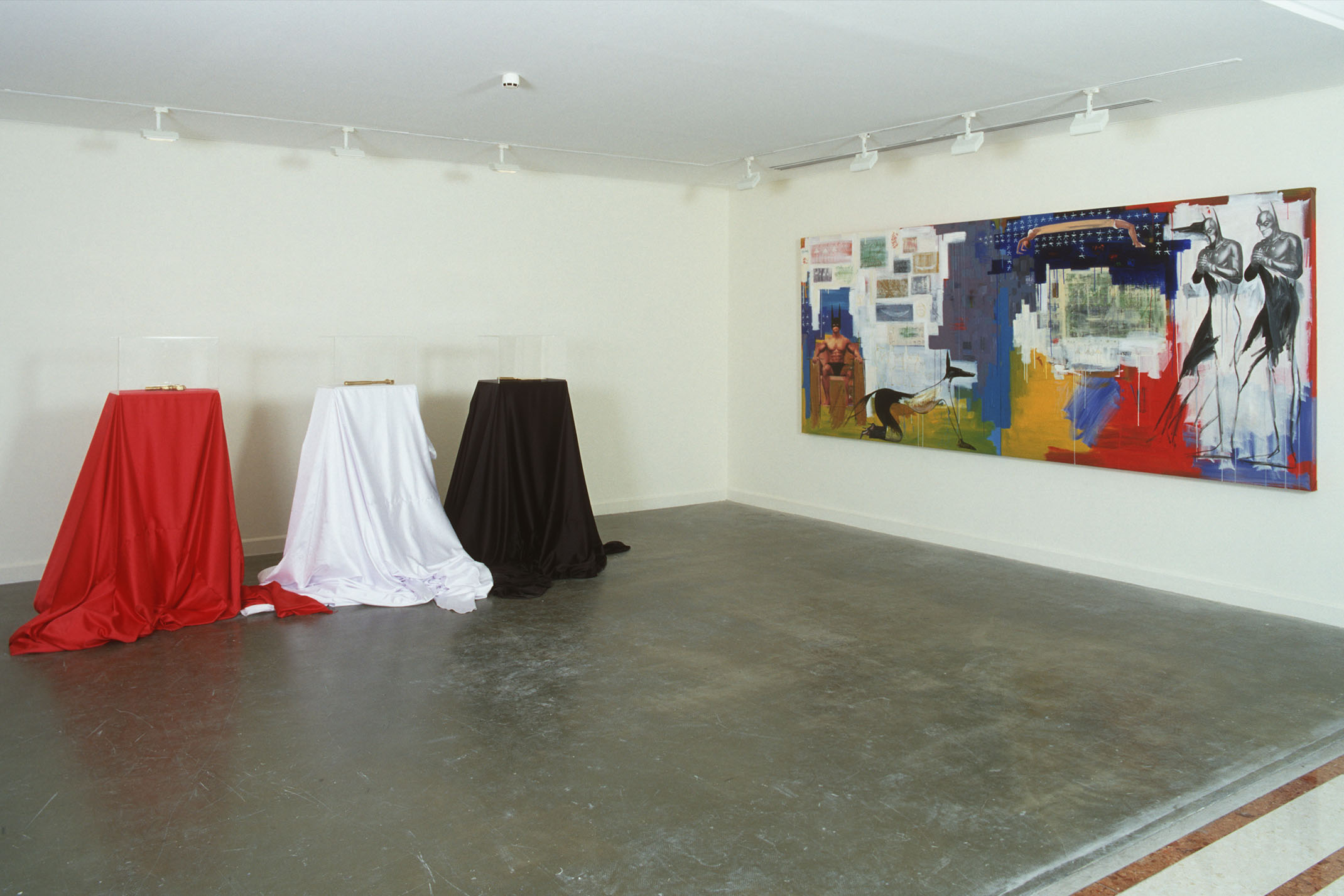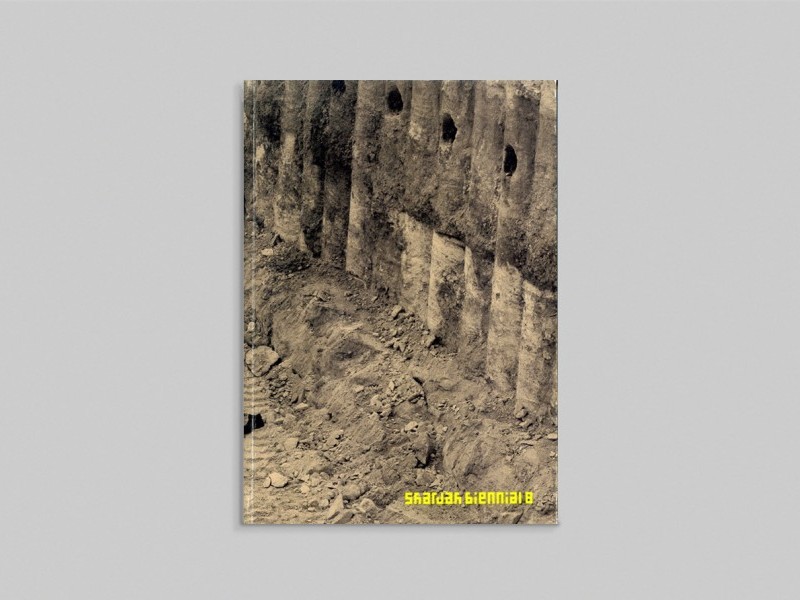
Contaminated Culture, 2006-2007
Khaled Hafez
Contaminated Culture, 2006-2007
Contaminated Belief, Installation, 35x15x4 cm each,
wood, cloth, glass, toy axe, toy knife;
and Contaminated Idols, Paintings, 160x200 cm each
search


Khaled Hafez
Contaminated Culture, 2006-2007
Contaminated Belief, Installation, 35x15x4 cm each,
wood, cloth, glass, toy axe, toy knife;
and Contaminated Idols, Paintings, 160x200 cm each
Visions of Contaminated Memory
"I grew up in a different Cairo, the Cairo of the late sixties and seventies; at that time, to me as a child, people looked different, dressed differently, talked differently, and strangely enough, behaved differently. I had a bicycle; I climbed mango trees in the gardens of villas around the three-floor apartment block where I lived with my parents and kid brother.
Today, no wise parents allow their child to ride a bicycle in the streets of Cairo; there are no longer any mango trees to be seen. People today look different from in my childhood days; they dress differently, talk differently, and consequently behave differently. The openness, elegance and tolerance of the same citizens perished in a massive wave of cultural regression, noise, pollution and over-crowdedness of people, ideas, thoughts and distorted beliefs."
Extract from my diary, dated February 15, 2003
For slightly more than ten years I have been probing in my artwork the notion of identity; I personally believe that Egypt enjoys a polyvalent identity that influences in every possible way everyone and everything living on its land: Mediterranean, African, Middle Eastern, Arab, with several layers of culture, cumulative enough to create today a cultural overload, manifested in the last few decades by jammed and distorted streams of thought.
Visions of Contaminated Memory tries to probe, through the accumulation of created and stock sounds and images, the cultural contamination that is much represented in the state of identity confusion omnipresent today in many parts of the Middle East.
The visual part of the video works to juxtapose places and people of the past and of the present, through the use of a two-channel screen, one of which essentially carries stock images/video from the Egyptian past, while the other is a created video image of present-day places and people. The video exposes the environmental aggression seen today as the norm, as well as the change in the dress-code of the same social strata of people on the Egyptian street.
The audio part of the work accumulates and builds up throughout the video to climax with an aggressive mass of sound, reminiscent of what meets the average pedestrian in the crowded and noisy streets of Cairo today. The sound mass (more than ten audio superimposed tracks) represents, through violent tones and confounded speech, the identity confusion, jammed thoughts and distorted beliefs among other traits that accompany serious social urban contamination.
The accumulation of the audio tracks will be representative of Egyptian mainstream taste. The combination of audio + video will tentatively try to represent one of the most polluted cities in the world: Cairo.
This project was part of Sharjah Biennial 8.

This catalogue accompanied Sharjah Biennial 8, which attempted to renegotiate the relationship between art and ecology into a system of cohabitation.

The second book in the Still Life: Art, Ecology and the Politics of Change series, documents Sharjah Biennial 8 as it was on view.